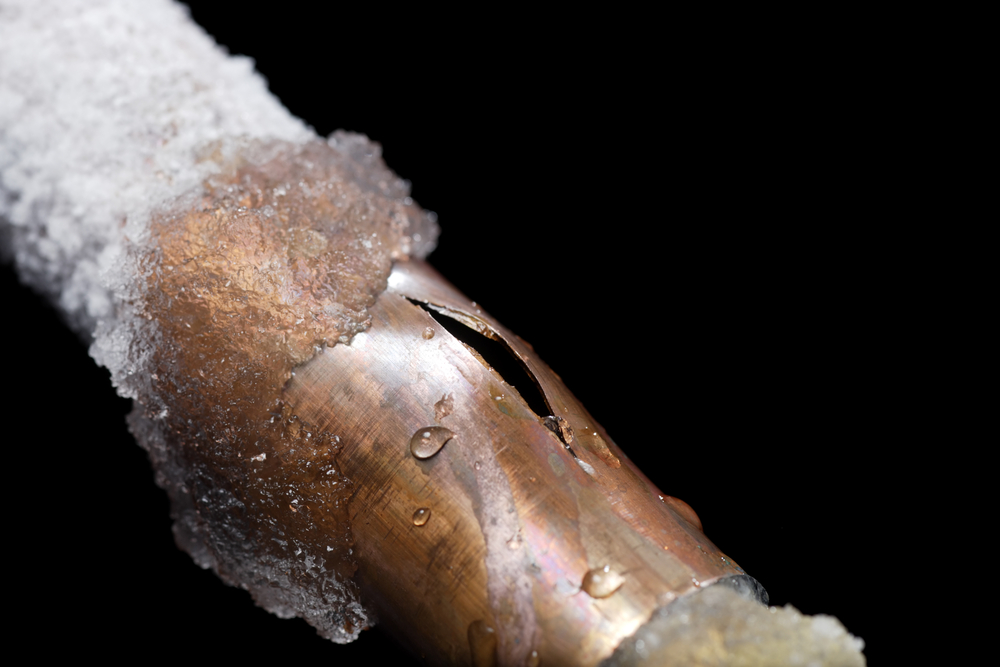Just how do you really feel with regards to 6 Ways to Prevent Frozen Pipes?

Cold weather can ruin your pipes, specifically by freezing pipelines. Right here's just how to avoid it from occurring and what to do if it does.
Introduction
As temperatures drop, the threat of icy pipes rises, possibly causing costly fixings and water damages. Understanding just how to stop frozen pipelines is vital for property owners in cold environments.
Recognizing Frozen Pipelines
What causes pipelines to freeze?
Pipelines freeze when subjected to temperature levels below 32 ° F (0 ° C) for expanded periods. As water inside the pipelines ices up, it expands, putting pressure on the pipeline walls and possibly triggering them to break.
Risks and damages
Icy pipelines can lead to supply of water interruptions, property damage, and costly repair services. Ruptured pipelines can flooding homes and create considerable structural damage.
Signs of Frozen Pipes
Recognizing icy pipelines early can stop them from rupturing.
Exactly how to identify icy pipelines
Try to find reduced water circulation from taps, uncommon odors or noises from pipelines, and noticeable frost on subjected pipes.
Prevention Tips
Insulating at risk pipelines
Wrap pipes in insulation sleeves or make use of warm tape to safeguard them from freezing temperature levels. Concentrate on pipes in unheated or external locations of the home.
Heating strategies
Keep indoor areas sufficiently heated, particularly areas with pipes. Open cupboard doors to allow cozy air to circulate around pipes under sinks.
Shielding Outside Pipes
Garden pipes and outdoor faucets
Separate and drain garden tubes before wintertime. Mount frost-proof spigots or cover outside taps with shielded caps.
What to Do If Your Pipes Freeze
Immediate actions to take
If you presume icy pipelines, keep faucets available to eliminate stress as the ice thaws. Use a hairdryer or towels soaked in warm water to thaw pipelines gradually.
Long-Term Solutions
Architectural adjustments
Consider rerouting pipes away from exterior walls or unheated areas. Add added insulation to attic rooms, cellars, and crawl spaces.
Updating insulation
Buy high-grade insulation for pipelines, attic rooms, and walls. Proper insulation helps keep regular temperature levels and reduces the risk of frozen pipes.
Conclusion
Stopping icy pipelines needs positive procedures and quick feedbacks. By recognizing the causes, indications, and safety nets, homeowners can secure their pipes during cold weather.
5 Ways to Prevent Frozen Pipes
Drain Outdoor Faucets and Disconnect Hoses
First, close the shut-off valve that controls the flow of water in the pipe to your outdoor faucet. Then, head outside to disconnect and drain your hose and open the outdoor faucet to allow the water to completely drain out of the line. Turn off the faucet when done. Finally, head back to the shut-off valve and drain the remaining water inside the pipe into a bucket or container. Additionally, if you have a home irrigation system, you should consider hiring an expert to clear the system of water each year.
Insulate Pipes
One of the best and most cost-effective methods for preventing frozen water pipes is to wrap your pipes with insulation. This is especially important for areas in your home that aren’t exposed to heat, such as an attic. We suggest using foam sleeves, which can typically be found at your local hardware store.
Keep Heat Running at 65
Your pipes are located inside your walls, and the temperature there is much colder than the rest of the house. To prevent your pipes from freezing, The Insurance Information Institute suggests that you keep your home heated to at least 65 degrees, even when traveling. You may want to invest in smart devices that can keep an eye on the temperature in your home while you’re away.
Leave Water Dripping
Moving water — even a small trickle — can prevent ice from forming inside your pipes. When freezing temps are imminent, start a drip of water from all faucets that serve exposed pipes. Leaving a few faucets running will also help relieve pressure inside the pipes and help prevent a rupture if the water inside freezes.
Open Cupboard Doors
Warm your kitchen and bathroom pipes by opening cupboards and vanities. You should also leave your interior doors ajar to help warm air circulate evenly throughout your home.

I came across that write up about 6 Ways to Prevent Frozen Pipes when exploring the web. Sharing is good. You won't know, you will be helping someone out. We truly appreciate reading our article about Helpful Tips to Prevent Frozen Pipes this Winter.
Estimate
Comments on “Important Tips to Avoid Frozen Plumbing in Winter: Professional Insights”